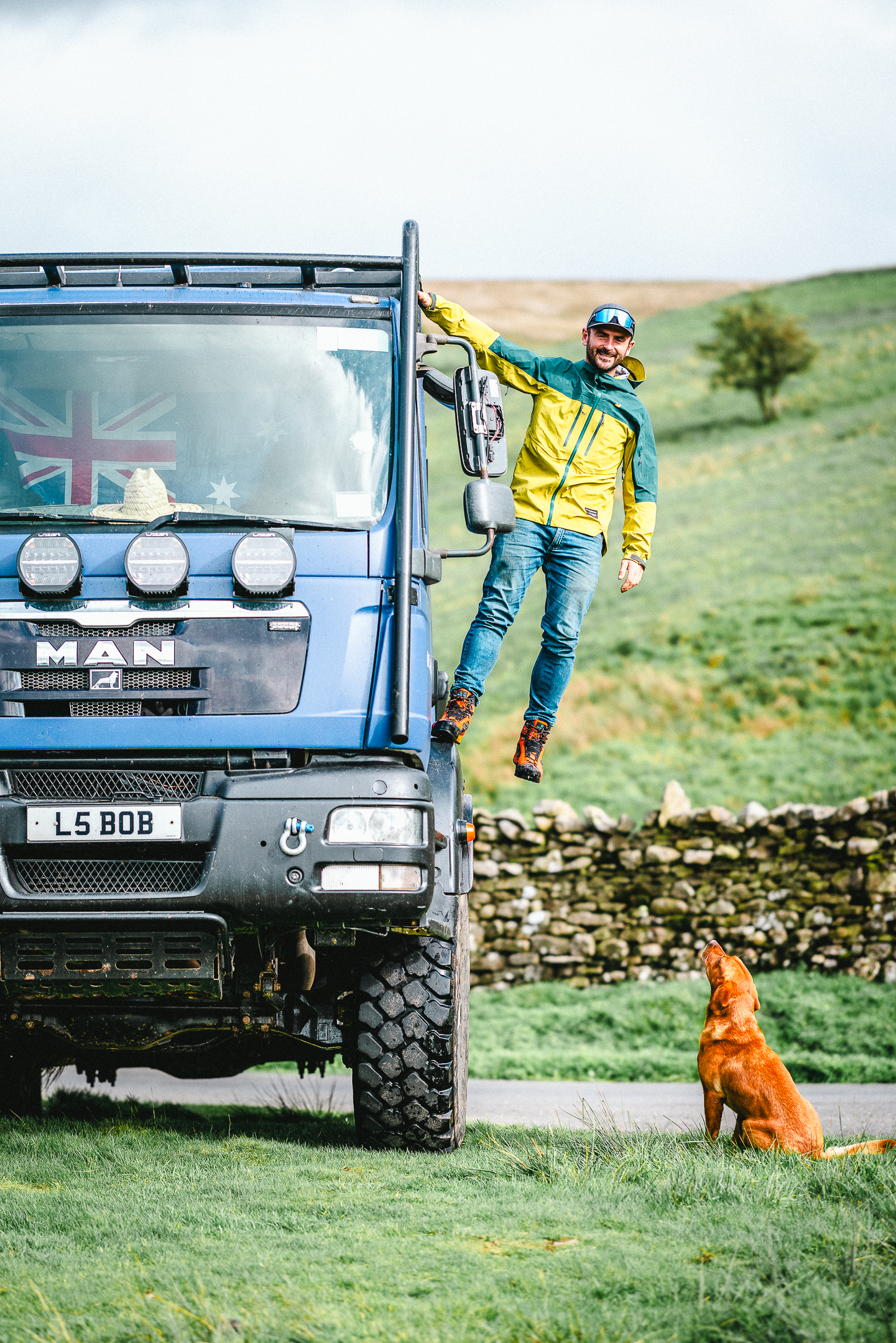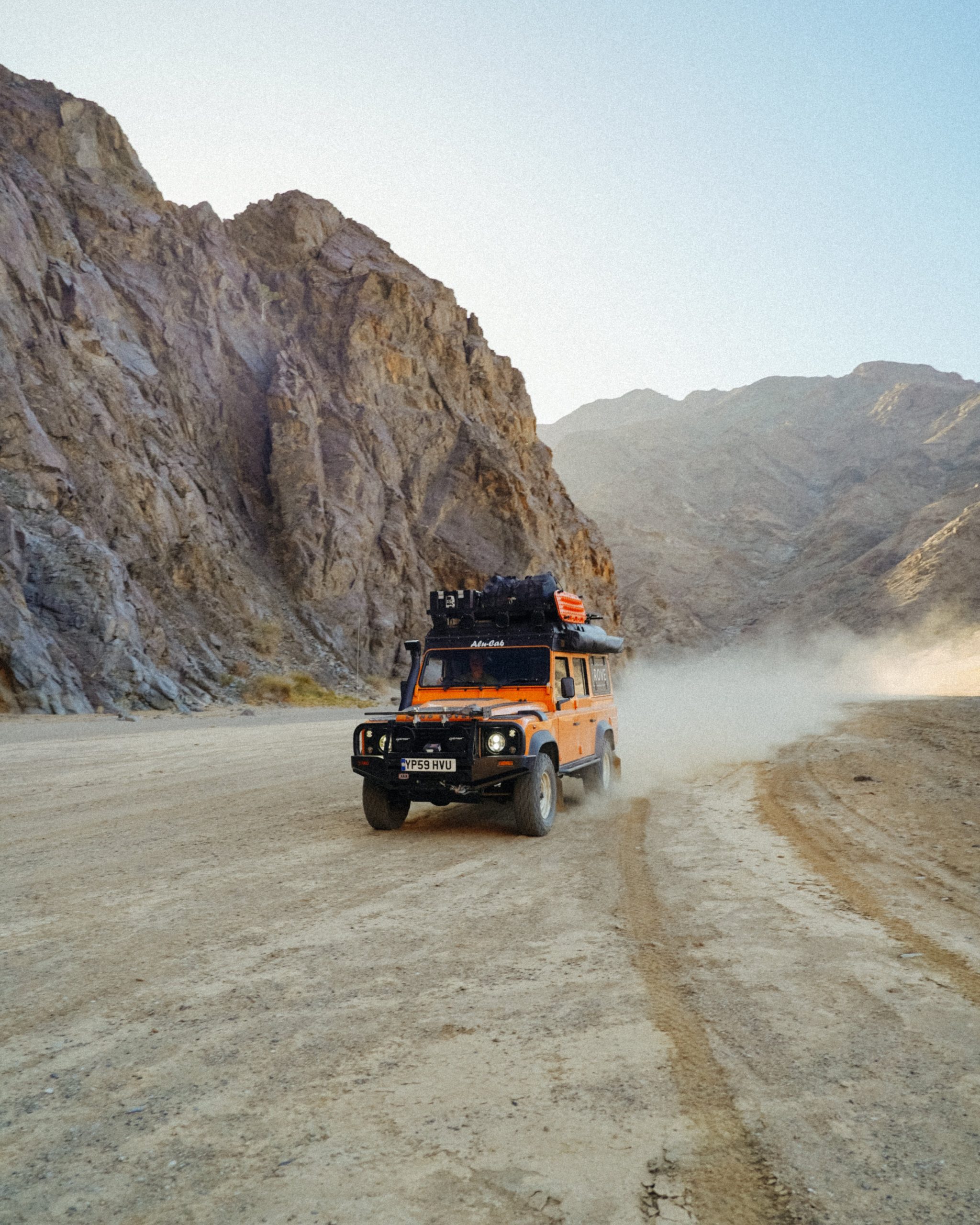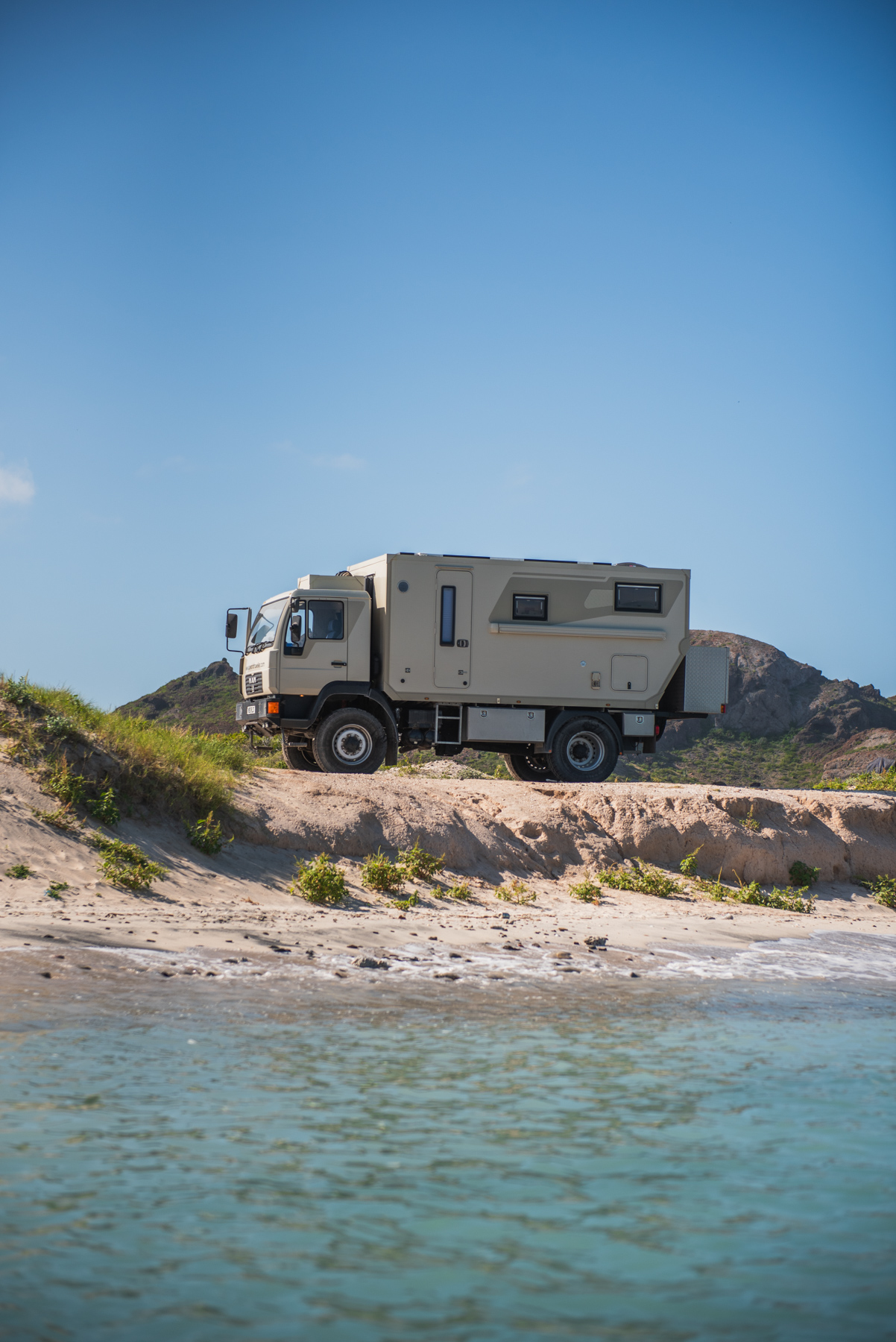Overlander electrical systems
Looking for an off-grid electrical system for your overlander?
Adventure starts with an electrical system that you can count on to take you anywhere, no matter how far off the beaten track 🏜️
systems designed
mobile off-grid electrics*

GBEA Awards 22 & 23
What is overlanding?
For the seasoned overlander, the thrill lies in tackling the uncharted and the rugged, where each journey is an adrenaline-fueled exploration of the world’s most remote corners. It’s about pushing the limits of both your vehicle and yourself, navigating challenging terrains that test your skills and resilience.
Overlanding isn’t just about the destinations; it’s about the gritty, raw adventures encountered along the way. It’s where your expertise in off-grid navigation, vehicle mechanics, and sustainable travel practices truly shine. Each trip is a unique story of adventure, an opportunity to immerse in diverse cultures and landscapes, and a chance to forge unforgettable memories in the wilderness. Overlanding, for you, is not just a hobby; it’s a relentless pursuit of adventure, constantly inspiring you to explore further, push harder, and live more vividly.
The essence of overlanding is self-sufficiency. You carry your world with you – shelter, food, water, and tools – all packed into a vehicle that becomes more than just transportation; it becomes a trusted companion. This lifestyle demands a unique blend of skills: from mechanical knowledge to fix a sudden breakdown in the wilderness, to the culinary creativity needed to whip up a meal with limited ingredients. It’s about being prepared for anything, from changing a tire in the rain to navigating through a sudden sandstorm.
Moreover, overlanding is about respect – for the environment, local cultures, and fellow travelers. It’s an exercise in leaving no trace, in understanding the delicate balance of the ecosystems you travel through. It’s about connecting with people whose lives are as diverse as the landscapes they inhabit, learning from them, and sharing stories.
In essence, overlanding is more than just a form of travel; it’s a deeply enriching experience that tests your limits, expands your horizons, and leaves you with a profound sense of connection to the world. For those who answer its call, overlanding is not just a journey across land; it’s a journey through life, constantly learning, evolving, and experiencing the unbridled joy of discovery.
What are overlanders?
We have had the pleasure of helping hundreds of overlanders across the world power their adventures, and had the pleasure of bumping into fellow explorers in the remotest of locations on our own travels.
Overlanders come in many forms, but as diverse the vehicles may be the goal is the same. As we write this very page, we (Charlie & Dale) are sat at the port of Cartagena, Colombia 🇨🇴 waiting for our humble Mercedes Sprinter Ringo to clear customs so we can continue our journey from Canada to Patagonia. Whilst our van by no means looks like an overlander the considerations we made whilst designing our own vehicles electrical system are very similar to those of a true expedition vehicle.
Now with over 100 overlander electrical systems under our belt and many thousands of campervan electrical systems we have refined Nohma’s software to specifically cater for the requirements of an overlander.
Power up your adventures
💯 Performance in remote places is everything; cutting corners can mean the difference between success and being stranded in the wilderness.
🔥 Extreme conditions are where poorly conceived electrical systems are most likely to reveal their vulnerabilities and fail.
🌎 An adventure ready high spec electrical system doesn’t need to cost the earth, just get you around it.
The only thing keeping you up at night should be your view of the stars ⭐ Our systems are designed to BS 7671 & NFPA 70 by qualified engineers.
Overlander electrical system considerations
Batteries 🔋
We only offer certain batteries in our systems because we have the privilege of seeing reliability data and warranty statistics for many of the most common options. The battery market is unfortunately full of false claims and white labelled products that simply don’t deliver on their claims.
Choosing the optimal battery chemistry for your system is also important, especially in extreme temperatures. Lithium-ion batteries are preferable for their power density and performance in a wide range of temperatures compared to lead-acid batteries. However they must have a battery management system (BMS) to regulate temperature and prevent damage and ideally in integrated heater to ensure the batteries still perform when your plowing through the tundra.
Solar ☀️
For large overlanders utilising the substantial roof space for solar is often a no brainer, and given the ever decreasing cost of solar panels it can be tempting to install a large solar array than required to maximise solar yield even in adverse conditions. Whilst this approach often makes sense and allows other areas of the system to be de-specced, if your planning on heading anywhere near the polar regions your unlikely to yield sufficient power even from a large array. This problem is exacerbated further in winter and can render solar completely useless.
For smaller overlanders like Rove’s Land Rover Defender, they were able to cram two 150W panels onto their pop top amongst their other equipment. Whilst this alone isn’t enough to support the power usage of their small induction hob (even in sunny South Africa) it reduces the requirements of the battery to battery charger system and strain on the alternator.
Battery to battery charging 🚚
Most overlanders will employee a battery to battery charger or several within their system design because inherently overlanding equals lots of driving and potential to recharge. Unlike solar however, this power is not free. The power your battery to battery charger transfers to your leisure batteries is generated by the vehicles engine via the alternator, so in the same way that turning the aircon on effects your fuel efficiency so does the battery to battery charger.
The cost of running a 60A battery-to-battery charger for 1 hour in a vehicle with a fuel efficiency of 20 miles per gallon (overlanders are thirsty), at £1.50 per gallon, is approximately £0.13 per hour. This calculation is based on a conservative efficiency assumption and typical vehicle electrical system specifications.
Solar therefore typically provides better value for money however, to avoid dependancy on a single charging method and to account for the environmental factors we carefully balance the specification of both of these re-charging methods.
Shore hookup 🔌
Our overlander system specifications typically include no dependancy on shore hookup due to the remote nature of overlanding. However, some customers do still choose to include this should they require a generator to supplement their power usage, or find themselves on a campsite.
AC power ⚡
Whilst overlanding for some is still an exercise of type 2 fun, and create comforts like fridges and even coffee makers detract from the experience, most overlanders we work with are keen to create a ‘home away from home’ so systems typically include an inverter from 2000-5000VA. The exact size however is of course based on the appliances you specifically wish to run and whether these need to run at the same time. We are often asked to include an inverter much larger than is actually required, which is fine, but its also worth being aware that the larger the inverter gets the larger the standby power draw gets.
DC power 💡
The majority of our overlander systems utilise a 24V system due to the potential loads on the system, however some smaller systems will still use 12V and some even require 48V. As with so many aspects of electrical system design however, this needs to be determined on a case by case basis. Depending on your system voltage and the appliances you wish to use, a DC-DC converter may be required to support DC loads such as fridges and lights. On a more practical note we recommend overlanders to carry some spare critical components such as extra fuses as these delicate parts are vulnerable to breaking due to high vibration and extremes of temperature.
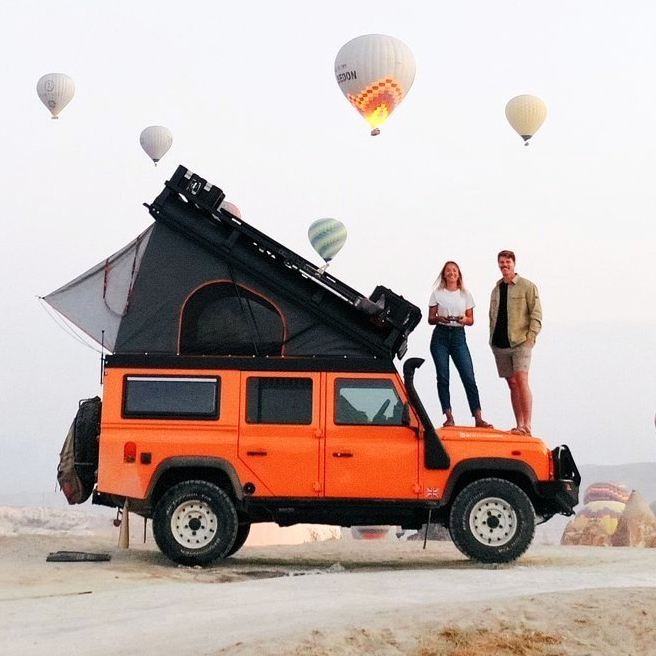
After 4 years overlanding, to us it’s all about the ability to adventure further and have the comforts of home wherever the road takes us — the right electrical system is a crucial part of that. Whether it’s working from the road or a fresh meal in the wild, so much of what we do is reliant on power.
Mary Hannah, @expeditionrove



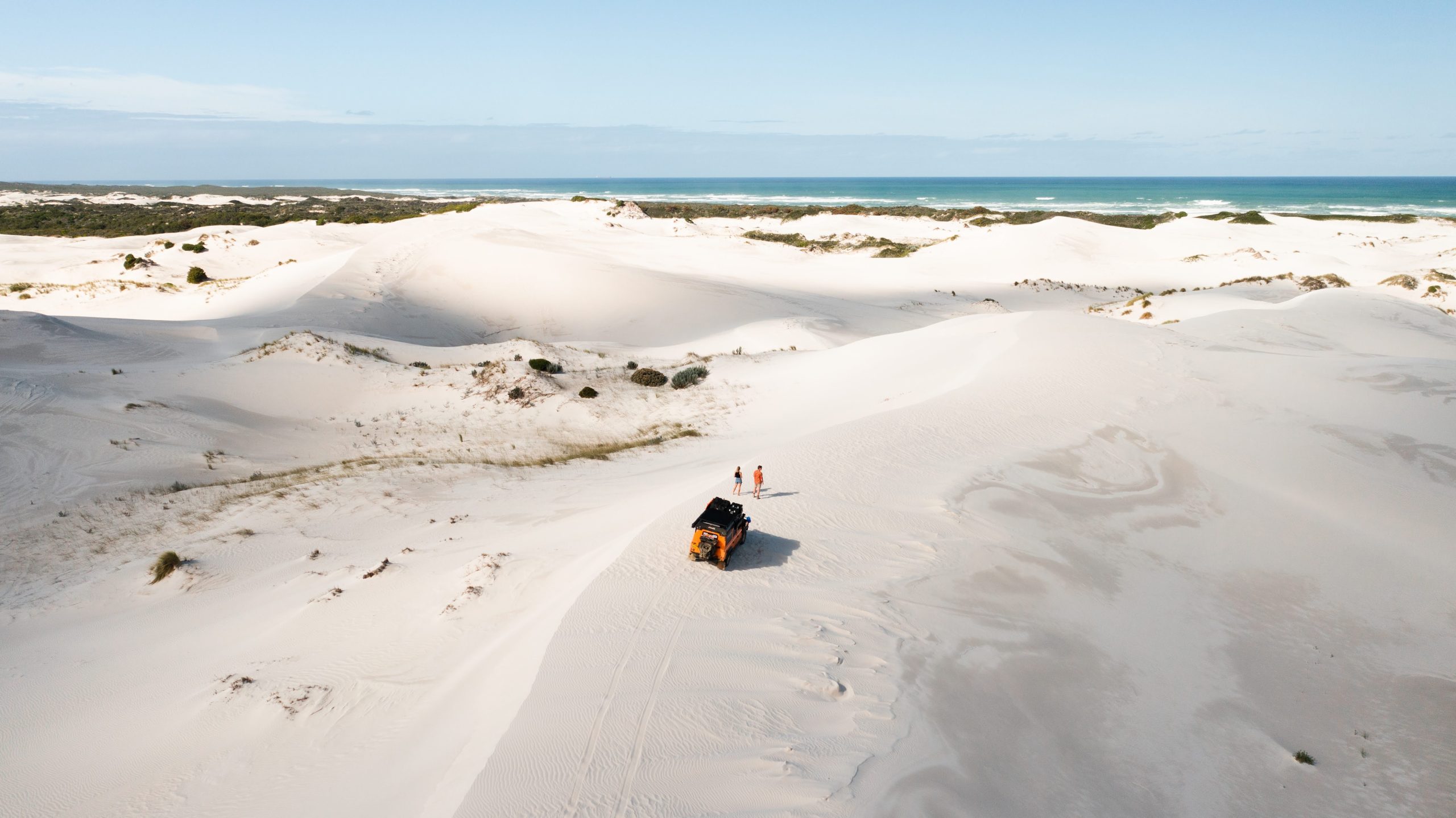
Expedition Rove soaking up the rays in Rietfontein Nature Reserve, South Africa
Why use Nohma?
Without help, 99.4% of people will get their electrical system wrong†. Our clever software uses 200+ calculations & parameters to design your system, so you can leave the electrics to the experts.
†Results from our Nohma electrical system survey. Discover more.
Customer story ⛰️
Bobby Bolton’s MAN TG overlander
Built for an epic journey from the UK to Australia with a bespoke Nomadic Energy system inside to power the adventure.
Tell us about your conversion
My conversion is a little larger than your standard van, a MAN 18-tonne HGV 4-wheel drive truck, to be precise. In a former life, it was a water bowser, carrying a huge tank on its back and working on construction projects across a number of different sites. Although the water tank is no more, the truck will now be carrying my home on wheels, complete with a king-size bed, a bathroom, air-con, a fridge/freezer and even an outdoor BBQ.



What’s in Bobby’s system?
For Bobby’s adventure across 3 continents and some of the hottest places on earth, air conditioning was a must. To power his Dometic RTX1000 24V air con unit his system required two 560Ah 12V Fogstar LiFePO4 batteries (wired in series), which are recharged by no less than three 24V 17A non-isolated B2Bs and a whopping 1170W solar panel array.
Add in a 3000VA 24V inverter to power high-wattage appliances like a kettle and a hairdryer (for his dog Red) and a remote monitoring system Bobby’s system is a versatile beast, capable of sustaining indefinite off-grid adventures.
Bobby's electrical system (for illustration purposes only)
What was the best part about using Nomadic Energy?
Having a point of contact like Paul [one of our engineers]! That was the cherry on top. It’s always reassuring to have someone you can reach out to, especially when you’re dealing with something as crucial as your van’s electrical system. Paul was super helpful, and having that kind of support made the whole experience smooth and hassle-free. Even though I got an electrician to do the actual installation, having that support was a game changer. It’s great for anyone to have, even for pros. It helps prevent any struggles or confusion during the setup.

The best part about Nohma is the design and diagram they provided – totally idiot-proof, super easy to follow.
Bobby Bolton, Overlander & explorer
Campervan electrics leaving you confused?



